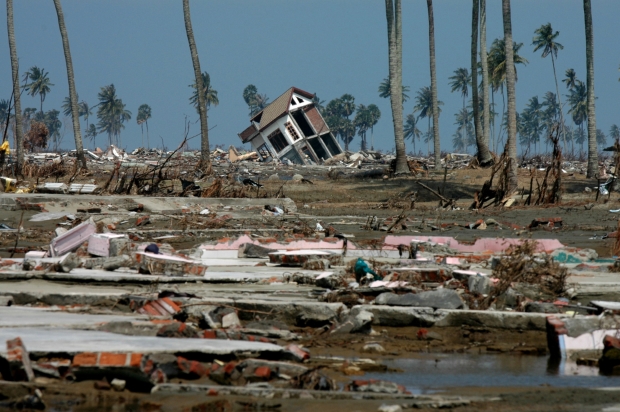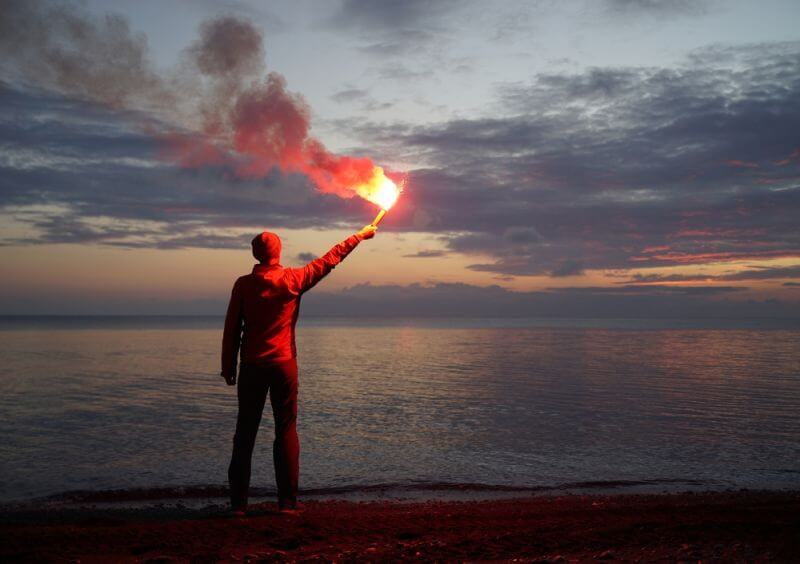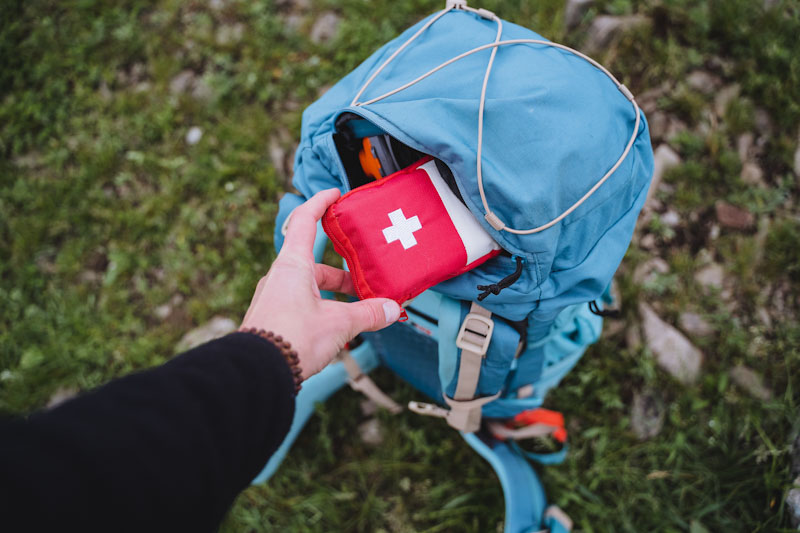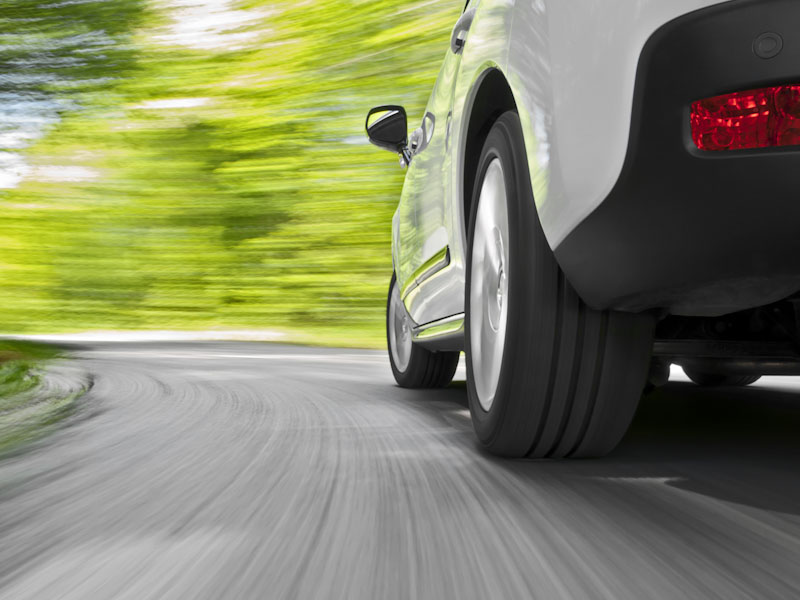If you live in Iowa or Idaho, you probably think this is a joke: what do you mean, dealing with an impending tsunami?
What the hell is that? We don’t have those down on the farm.
Well, if you’ll never leave Kansas in this life, you may stop reading the article right here, right now, and go feed them hogs, or whatever. Joke aside, we’re all living in a day and age when air travel has become dirt cheap, and even us, “les deplorable” in flyover America can afford an exotic vacation now and then, at least once a couple of years, in place like Hawaii or whatever tropical paradise of your liking.
The Problem with Traveling Away from Home
In places with nice, sunny beaches, where people wear white pants and sip drinks with little straws all day long, is that, well, read the title of the article again. Yes, tsunamis are a clear and present danger on tropical islands, and as far as natural disasters go, it doesn’t get much better than that.
Literally, tsunami means big wave in Japanese, and they’ve been with us since forever. Such a “big wave” usually appears in the aftermath of an earthquake occurring on the sea floor. And by big-wave, we’re talking about up to 50 ft high (or more) tsunami waters hitting the aforementioned sunny beaches, surging inland and destroying everything in their path. Tsunamis are incredibly powerful, being perfectly capable of snapping power-polls like toothpicks, uprooting trees and even shutting nuclear reactors down. Yes, the Fukushima meltdown and all the havoc that took place afterwards were due to a powerful tsunami following a catastrophic earthquake.
Unlike those cool curling waves surfers love to ride, tsunamis look more like flash floods, which are growing and growing in height as they continue to surge inland, destroying everything in their path. The good news is that you can prepare for such a catastrophe in advance, and if you’re a fast thinker and you’re also capable of acting quick, you may be able to take decisive action when it comes to surviving a tsunami.
To Begin with the Basics
You must learn that eighty percent of tsunamis occur in the so-called Ring of Fire, which is the Pacific Ocean’s seismically active playground so to speak. In the US, the most tsunami-prone areas are Alaska and Hawaii, together with the entire West Coast, for obvious reasons (they vote blue). However, tsunamis may strike anywhere, and travel for hundreds of miles as they sweep across the oceans until they reach land-mass.
Now, besides earthquakes, tsunamis can be triggered by landslides, volcanic eruptions and even meteorites hitting the ocean. Regardless of its nature, there are a few warning signs that may predict an impending tsunami. The general rule of thumb is that a tsunami is very likely to occur after a coastal quake. Even if there’s no official tsunami warning, provided you’ve survived a strong coastal earthquake, it would be a great idea to go to high ground as soon as possible. Again, provided there’s such a thing in the first place.
Keep in mind that if the respective earthquake was strong enough to give birth to a “big wave”, it may be a matter of minutes until the tsunami hits, hence you should leave the premises ASAP, full throttle, pedal to the metal. Just in case. You can laugh it up later if nothing happens. Better safe than sorry, you know the drill.
There are also natural signs predicting an impeding tsunami, i.e. the ocean tends to withdraw before its arrival, an eerie phenomenon that leaves reefs and sand bare. This is an ominous sign of an impending tsunami, and if you live on a beach-property, well, you should run like hell. If your local authorities are doing their job, you should also receive various tsunami alerts via sirens, SMS alerts, TV/radio and what not.
Boat in the open ocean
Now, if you were already warned, and you happen to be on a boat, the best idea would be to stay there. Boats are relatively safe in the deep ocean (by deep ocean I mean >100 meters) compared to being moored in a harbor.
On land
Provided you’re on land, you’ll never know how much time you have to deal with an impending tsunami, so you must act fast and evacuate as far away as possible. The objective would be to reach high ground (at least one hundred feet above sea level) in the shortest amount of time possible. If there’s no high-ground to speak of, you should teleport you and your family at least 3 miles away from the ocean. The farthest, the better.
Now, if you can’t get away fast (as in further inland) from an impending big-wave, as roads/bridges/infrastructure may be damaged after a strong earthquake, go up. Getting high, as in on the rooftop of a sturdy building, is your best option in this case.
Bugging out
As usual, when it comes to bugging out on a short notice, being adequately prepared is of utmost importance. And yes, we’re talking about your emergency survival kit, which should be in your car, and your car should be ready to roll at any time, with a full tank of fuel and everything working like a Swiss watch, especially if you live in a tsunami hot-spot. Essential emergency supplies for your tsunami survival kit should include a NOAA weather radio, to keep you up to date about emergency services and “breaking news”, warm clothes, a good flashlight, food and water for at least three days, a battery pack for your smartphone and all that. If you’re a regular reader of Survivopedia, you already know how to assemble a proper emergency kit.
Also, put together a plan (in advance) with your family members and friends, discuss com-strategies and randez vous points, so you’ll be able to reunite after the tsunami strikes if you’ve been separated. If the worst case scenario comes into play, i.e. you’re caught up in the tsunami’s way, and you’re facing turbulent flood-water filled with rubble, survival is just a matter of luck at this point. You can’t swim out of a tsunami, generally speaking.
Keep in mind that a tsunami is basically just a series of big waves hitting the shore at different time intervals. So, stay away for a while, after the first wave hit. A tsunami can last for hours or even days. Expect many waves, and focus on saving your life, not your earthly possessions. If you’re trapped on low ground, climb up a strong tree as a last resort, and if swept up by a tsunami, try to improvise a raft by climbing onto anything that floats.
Bottom Line
Always have a tsunami-evacuation plan, always keep an emergency survival kit in your car, know the area, be cautious and react quickly after an earthquake.
That about sums it up for today. I hope you enjoyed reading the article. If you have questions or comments, don’t hesitate to use the dedicated section below. Good luck, have fun folks!










Cindy H | August 10, 2019
|
I am a member of the west coast blue voters, we also recently had 27 people wounded and 3 killed in 1 minute in Gilroy, CA. The shooter was targeting Latinos, but shooting was pretty indiscriminate. My group also wants to be prepared in case of emergencies or what ever happens next. We do have a plan of defense and are prepared for long term survival. I think you were trying to be funny, but you may want to keep politics out of your news letter. I am grateful for the information you you impart,.
Lisa | August 10, 2019
|
When i lived in Orange County, CA, i was about 5 miles from the beach..
1/2 mi to the west of me was a bridge over the freeway which was a giant ditch.
I figured to survive, i had to be the other side of that bridge.
Actually thought out what i could load in the car, assuming I had the time.
don’t live there now, but did plan for that situation.
Holly Summers | August 11, 2019
|
I Live in Oregon, 1/2 mile from beach ,a few miles from Columbia River. When the big one shakes us, we’re all screwed, theres a lake with a bridge between us and hiway.. going to ride the wave to the highway in our zodiac rubber raft!! You”ll be reading about it after. lol
TruthB Told | August 11, 2019
|
Surfs Up!
LJ | August 11, 2019
|
I live on the South shore of Lake Erie and learned this summer that tsunamis are possible on the Great Lakes. The last one on Lake Erie was around 2013. It formed in the western lake and became dangerous in the middle of the lake North of Cleveland. It came ashore East of Cleveland, then ricocheted to the Canadian side. It bounced back and forth toward Buffalo and finally dissipated West of the city. Lake Erie is not deep enough for the wave to get too tall, but it still has destructive force. I guess that one was caused by a severe thunderstorm.